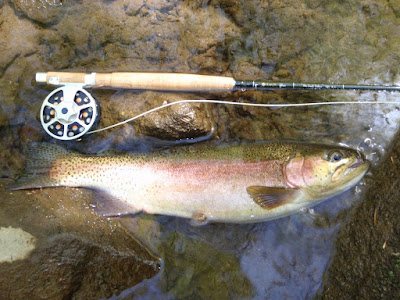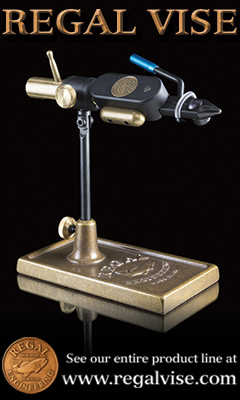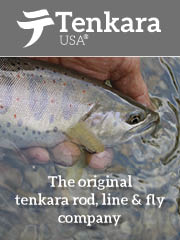I seem to have an ongoing struggle with fly fishing and photography. To set the record straight I am a fly fisherman, not a photographer. In fact I know next to nothing about photography. But its not the technical aspects of photography that I struggle with, its the physical part. The simple process of manipulating a camera, a fly rod and a wet, slippery, uncooperative model (we're talking fish here, get your minds out of the gutter).
My main interest in taking photographs is to enhance this blog. Posts are far more interesting with the addition of a few relevant photos, but I never dreamed it would be so difficult. A quick recap of today's event will explain what is the norm for me...
First of all is remembering that I am actually carrying a camera. Many days on the water go undocumented because I simply forget to take out the camera. I tend to block out everything when fishing, concentrating only on the task at hand...the fly, the presentation, the drift, the take, the fight and ultimately the release. It's usually only when the fish is swiming back into the current that I say "I should have taken a picture of that!"
When I do remember to take out the camera is when the the real problems start. Trying to take a decent shot of a really pissed off 20+" fish while standing thigh deep in fast water, precariously perched on greased bowling balls, holding a 10' fly rod in your teeth is somewhat of a challenge for me. The end result? A rod that is now 9'-6" and a fly box containing a winter's worth of tying slowly making its down stream. If it wasn't for a few dams in the way, that box of Czech nymphs would probably be nearing the Atlantic Ocean by now. Despite these misgivings I was determined to get a shot of this fish, so I wade to the bank take one crappy picture then finally get everything in order. I compose the perfect picture, the fish finally lying still in shallow water, a moss covered rock catching the only rays of sunlight that broke through the rain clouds today and the the whole scene perfected framed with a rod and reel. I double check my settings, place my finger on the shutter release and the f*@%$!& camera battery dies...

The Culpert























 My black, dry fly neck is picked over pretty good, I need to start looking for another!
My black, dry fly neck is picked over pretty good, I need to start looking for another!











